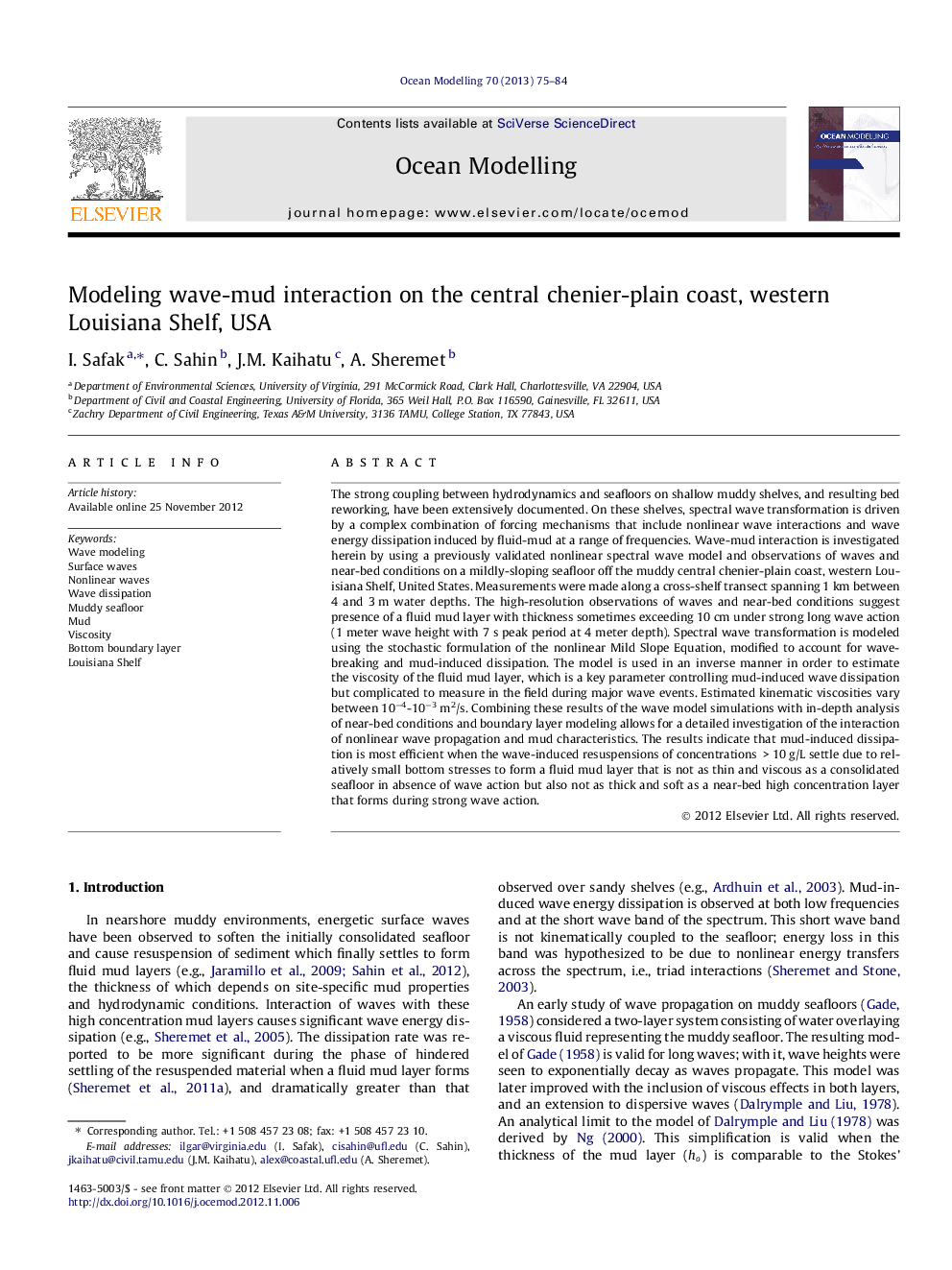| کد مقاله | کد نشریه | سال انتشار | مقاله انگلیسی | نسخه تمام متن |
|---|---|---|---|---|
| 4552094 | 1627778 | 2013 | 10 صفحه PDF | دانلود رایگان |

The strong coupling between hydrodynamics and seafloors on shallow muddy shelves, and resulting bed reworking, have been extensively documented. On these shelves, spectral wave transformation is driven by a complex combination of forcing mechanisms that include nonlinear wave interactions and wave energy dissipation induced by fluid-mud at a range of frequencies. Wave-mud interaction is investigated herein by using a previously validated nonlinear spectral wave model and observations of waves and near-bed conditions on a mildly-sloping seafloor off the muddy central chenier-plain coast, western Louisiana Shelf, United States. Measurements were made along a cross-shelf transect spanning 1 km between 4 and 3 m water depths. The high-resolution observations of waves and near-bed conditions suggest presence of a fluid mud layer with thickness sometimes exceeding 10 cm under strong long wave action (1 meter wave height with 7 s peak period at 4 meter depth). Spectral wave transformation is modeled using the stochastic formulation of the nonlinear Mild Slope Equation, modified to account for wave-breaking and mud-induced dissipation. The model is used in an inverse manner in order to estimate the viscosity of the fluid mud layer, which is a key parameter controlling mud-induced wave dissipation but complicated to measure in the field during major wave events. Estimated kinematic viscosities vary between 10−4-10−3 m2/s. Combining these results of the wave model simulations with in-depth analysis of near-bed conditions and boundary layer modeling allows for a detailed investigation of the interaction of nonlinear wave propagation and mud characteristics. The results indicate that mud-induced dissipation is most efficient when the wave-induced resuspensions of concentrations > 10 g/L settle due to relatively small bottom stresses to form a fluid mud layer that is not as thin and viscous as a consolidated seafloor in absence of wave action but also not as thick and soft as a near-bed high concentration layer that forms during strong wave action.
► Wave motion across a muddy bed, and bottom boundary layer are observed and modeled.
► Wave dissipation and bed state (stress, SSC) are coupled, and vary throughout a storm.
► Mud viscosity decreases due to strong waves, then increases with settling of resuspension.
► Wave dissipation reaches to its peak during the settling period after the storm.
Journal: Ocean Modelling - Volume 70, October 2013, Pages 75–84